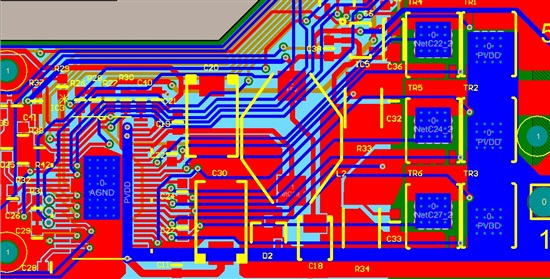Hi,
I've been trying to develop a design using the DRV8302 motor pre-driver and have had some success with the suggested schematic. I've run our brushless dc motor under load at around 30V PVDD. However, I've also had a couple of failures and am now trying to understand what may have been over-stressed, and what could have caused this. The failure seems to have occurred when the motor has stopped abruptly, perhaps suggesting a rate of change problem? Subsequently testing the failed boards with a PVDD of around 8V, I still appear to be able to talk to the chip, but at the point at which I turn on the gate drive, the FAULT line is asserted, the circuit takes around 180mA, and the GVDD supply is only perhaps 4V. Obviously, I need to know what to do to fully protect the circuit, but there are no clues from the data sheet.
Kind regards,
John


